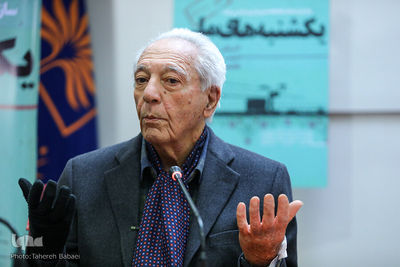Azarnush’s death was announced by the Center for the Great Islamic Encyclopedia, which did not mention the cause of his death.
He was the director of the Arabic Department of the Center since 1986 and also a senior advisor and a member of the Supreme Council of the institute.
“One of the prominent figures of the Center for the Great Islamic Encyclopedia leaves us alone after 35 years of continuous collaboration and writing many books and articles,” the director of the center, Kazem Musavi Bojnurdi, said in a press release.
Musavi Bojnurdi pointed to the prominent scholars of his center who have died over the past decade, and said, “How can we carry the great burden of providing knowledge at the center without them?”
Born in 1937, Azarnush studied Arabic literature at the Faculty of Theology and Islamic Studies at the University of Tehran.
He then left Iran to continue his studies in France, where he obtained a Ph.D. Following his return home, he began his teaching career at the Faculty of Theology and Islamic Studies.
He also translated several books from Arabic literature, including the Kitab Futuh al-Buldan (The Origins of the Islamic State), the best-known work by the 9th-century Persian historian Ahmad ibn Yahya al-Baladhuri of Abbasid-era Baghdad.
His rendition of the Kitab al-Musiqi al-Kabir (Grand Book of Music” written by Abu Nasr Muhammad ibn Al-Farabi, a renowned early Islamic philosopher and jurist who lived during the 9th and 10th centuries, writing in the fields of political philosophy, metaphysics, ethics and logic.
His books on Iranian studies and the Persian language’s influences on the Arabic language have been highly regarded by scholars.
Among those books is “The Clash between Arabic and Persian”, which explains how Iran’s first Arabic-Persian translation centers were established and how modern Persian script was developed over a four-century span beginning from the time of Salman-e Farsi (seventh century CE).
It is an in-depth survey of the history of the Arab invasion of Iran and describes battles between Arab rulers and Iranians in various parts of our country, and discusses many historical facts about the role of Iran’s political and cultural figures of the time.
The French publisher Fayard has acquired the copyrights of the book.
In a review session for his book, Azarnush had said, “I don’t agree with the idea that the Arabic language has overwhelmed [the Persian language]; the Persian language has had an active and dynamic presence over the centuries, but no one has talked about this aspect of the Persian language.
“I meant to scrutinize the origins of the first developments of the Persian language that came after the Sassanid era. I should refer to the late [Hossein] Zarrinkub’s ‘Two Centuries of Silence’, which recognizes the scholars’ silence on the vitality of the Persian language in those times.
“Many problems begin to surface when someone decides to study this subject. One of them is the problem of sources – most of them were written from a dogmatic point of view and some were written on the orders of the caliphs and governors. Thus, the Persian language has remained neglected here.”
Source:Tehran Times

